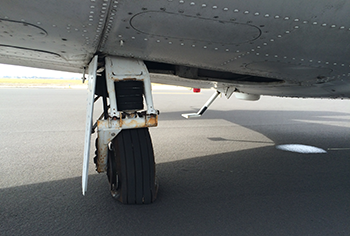
Is it enough to visually inspect the tires? Flying
Taking a careful look at the pressure in each of the tires before taking off is standard for any good preflight. But do you just take a glance at the wheels to see if they appear to be inflated? Using a pressure gauge once in a while to make sure your tires are inflated to the pressure recommended in the Pilot's Operating Handbook will reduce your likelihood of a mishap.
Recently, as I was on my way to the Flying Aviation Expo in Palm Springs, California, I had the misfortune of getting a flat tire. It was my first flat in 15 years of flying. I had preflighted, noting that the pressure appeared to be ok. I taxied out to the runup area by runway 26 in Camarillo, California (CMA) and made my final checks before continuing the taxi to the runway.
But when I started rolling toward the hold short line I knew that something was wrong. The airplane appeared to be limping along. I managed to pull back into the runup area to avoid blocking other airplanes from accessing the runway. I shut down and stepped out. Sure enough, I had a flat.
Fortunately the mechanics at Channel Islands Aviation were kind enough to fix me up right away and a little more than an hour later I was on my way. Thankfully it was the tube that had to be replaced, not the tire itself.
I don't know if having checked the tire pressure with a gauge would have made any difference. But from now on I will take the gauge with me more often.

Subscribe to Our Newsletter
Get the latest FLYING stories delivered directly to your inbox






